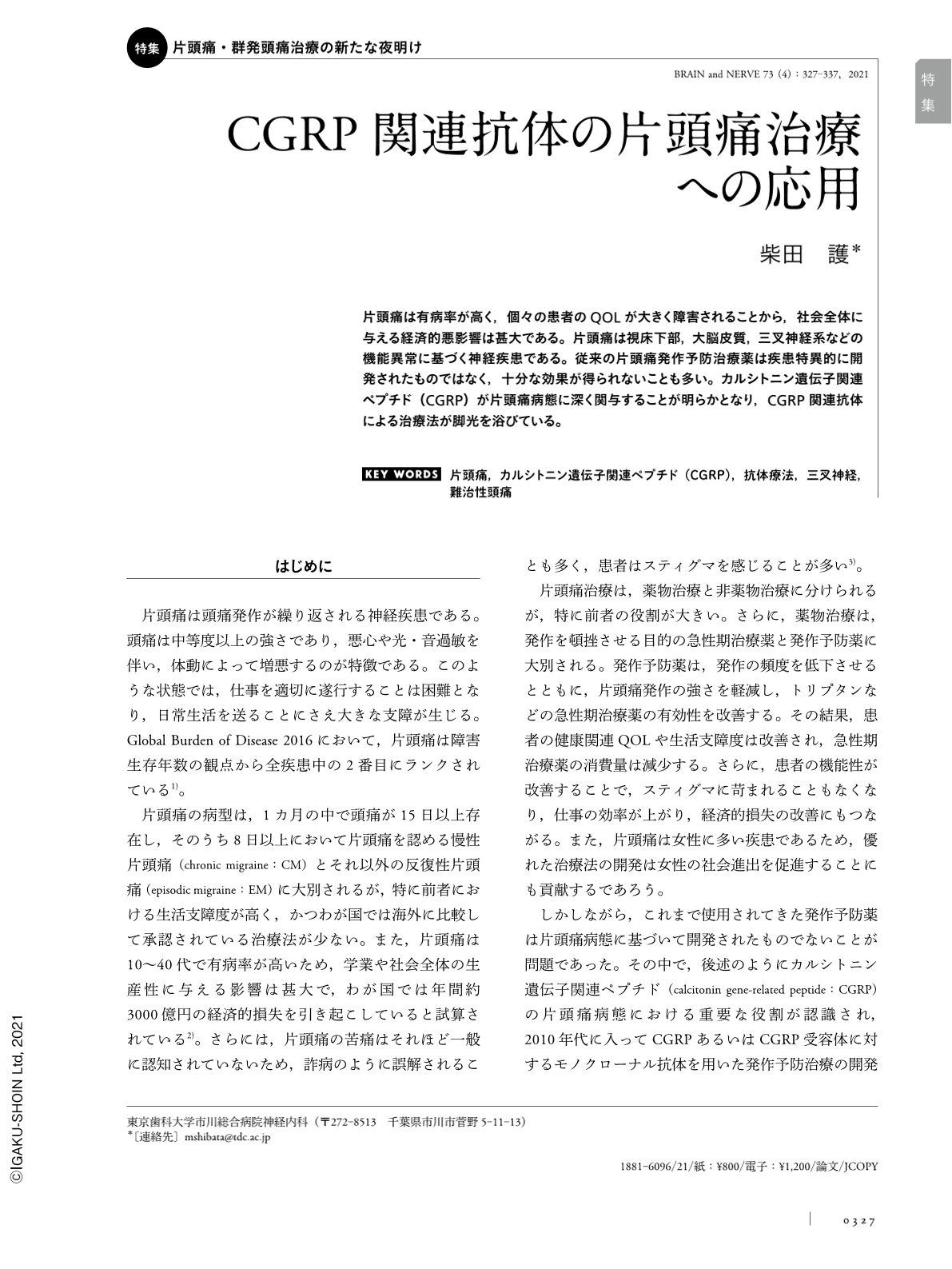Japanese
English
- 有料閲覧
- Abstract 文献概要
- 1ページ目 Look Inside
- 参考文献 Reference
片頭痛は有病率が高く,個々の患者のQOLが大きく障害されることから,社会全体に与える経済的悪影響は甚大である。片頭痛は視床下部,大脳皮質,三叉神経系などの機能異常に基づく神経疾患である。従来の片頭痛発作予防治療薬は疾患特異的に開発されたものではなく,十分な効果が得られないことも多い。カルシトニン遺伝子関連ペプチド(CGRP)が片頭痛病態に深く関与することが明らかとなり,CGRP関連抗体による治療法が脚光を浴びている。
Abstract
Migraine is a common and debilitating neurological disorder characterized by recurrent headaches of moderate-to-severe intensity. Because of its high prevalence, migraine causes a considerable financial burden on society. There is ample evidence showing that migraine is a complex neurological disorder that involves not only the trigeminovascular and autonomic systems, but also the hypothalamus and cerebral cortex. Calcitonin gene-related peptide (CGRP) was originally discovered as a 37-amino acid neuropeptide derived from a calcitonin gene splicing variant, is enriched in trigeminal ganglion neurons. Much attention has been paid to CGRP since it was found to be released from trigeminal terminals in animal migraine models. Subsequent studies demonstrated that CGRP administration induced migraine-like headaches specifically in migraineurs, thus highlighting its pivotal role CGRP in the development of migraine attacks. Monoclonal antibodies targeting CGRP and its receptor exhibited consistent efficacy for migraine prophylaxis with excellent safety profiles in clinical trials. Furthermore, emerging data support the long-term safety and efficacy of these antibodies. On the other hand, there are several concerns that have newly surfaced in the real-world setting. In this review, the development and perspective of anti-migraine therapeutic strategies using CGRP-related antibodies are discussed.

Copyright © 2021, Igaku-Shoin Ltd. All rights reserved.


